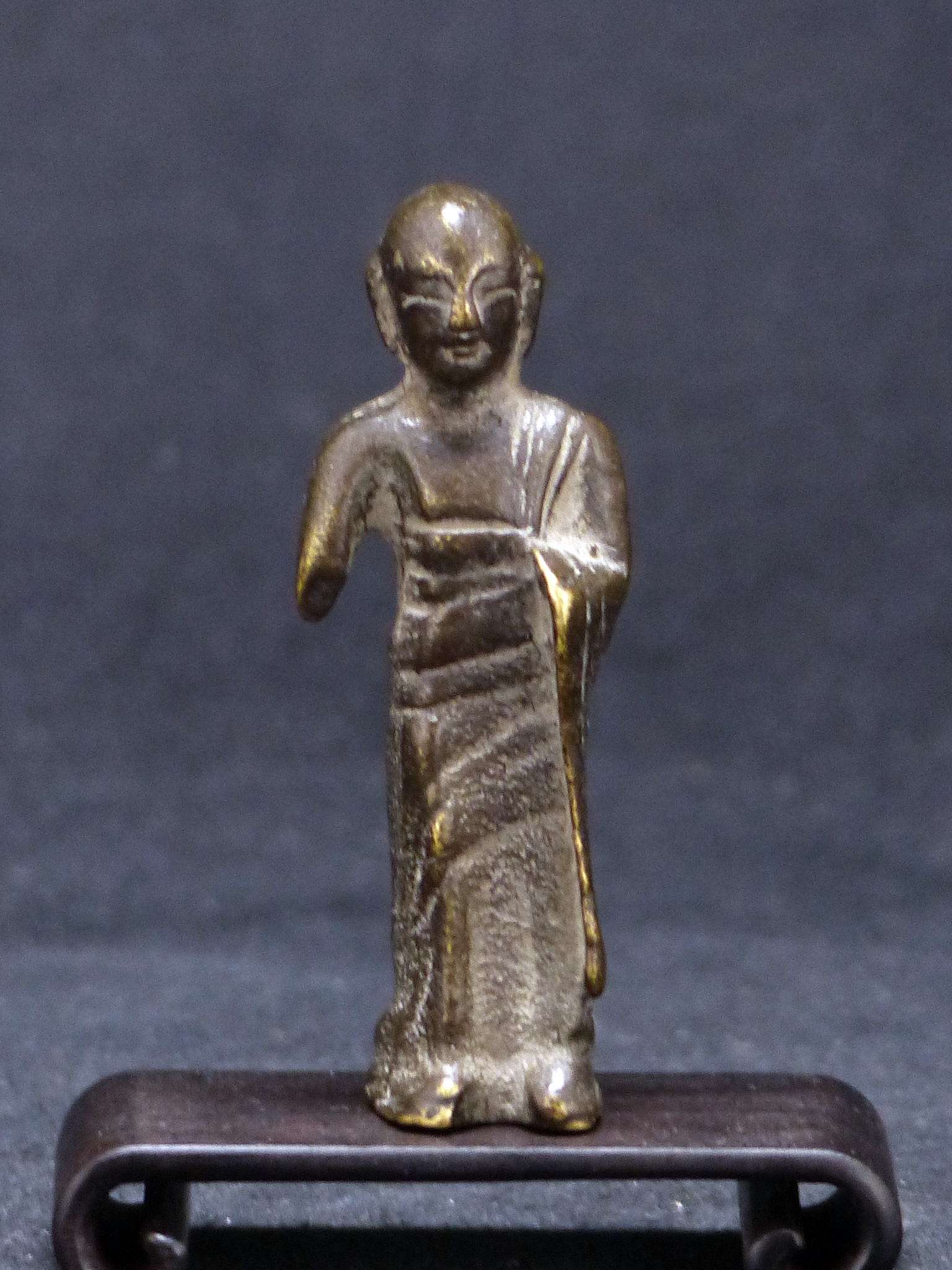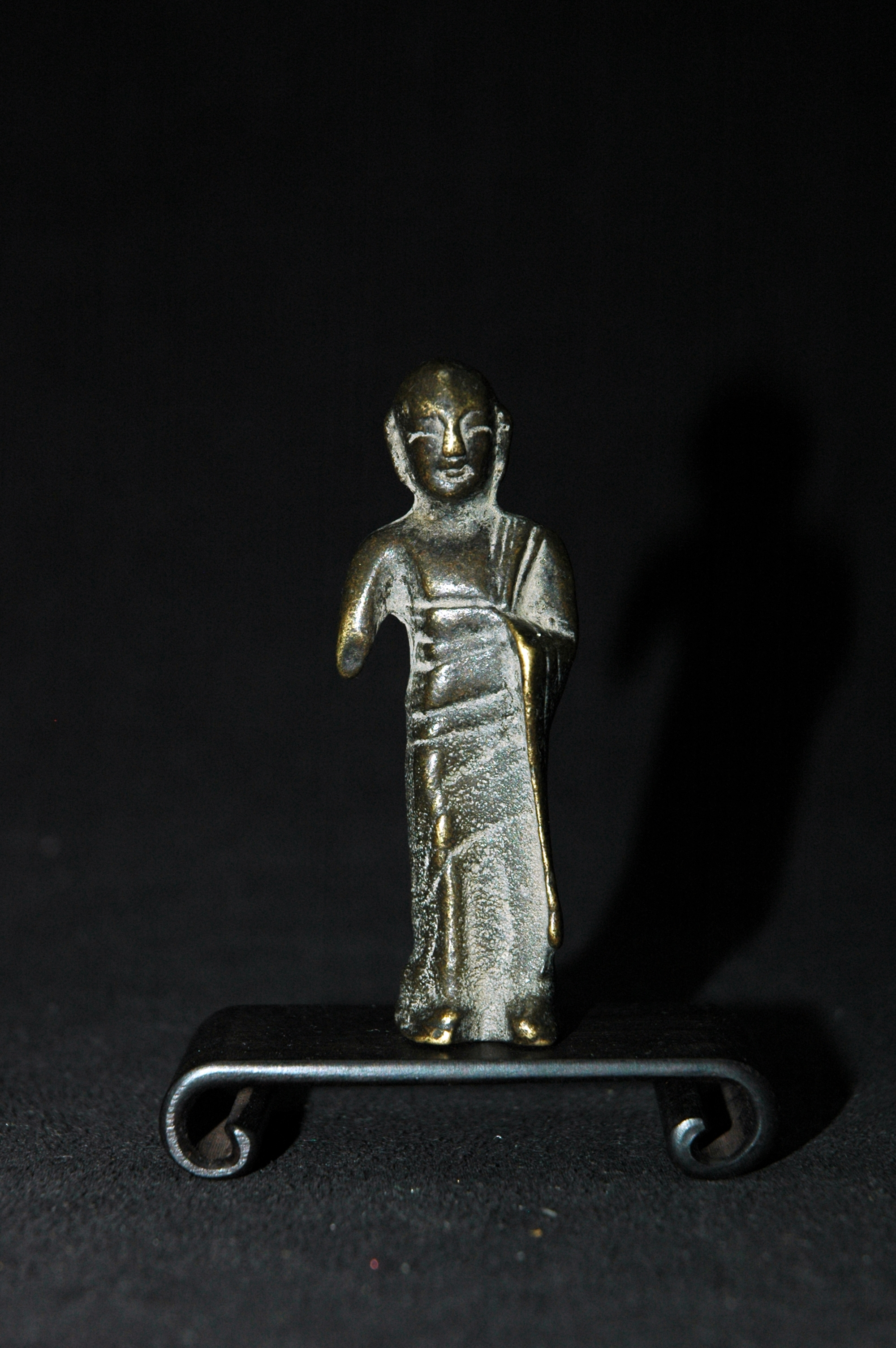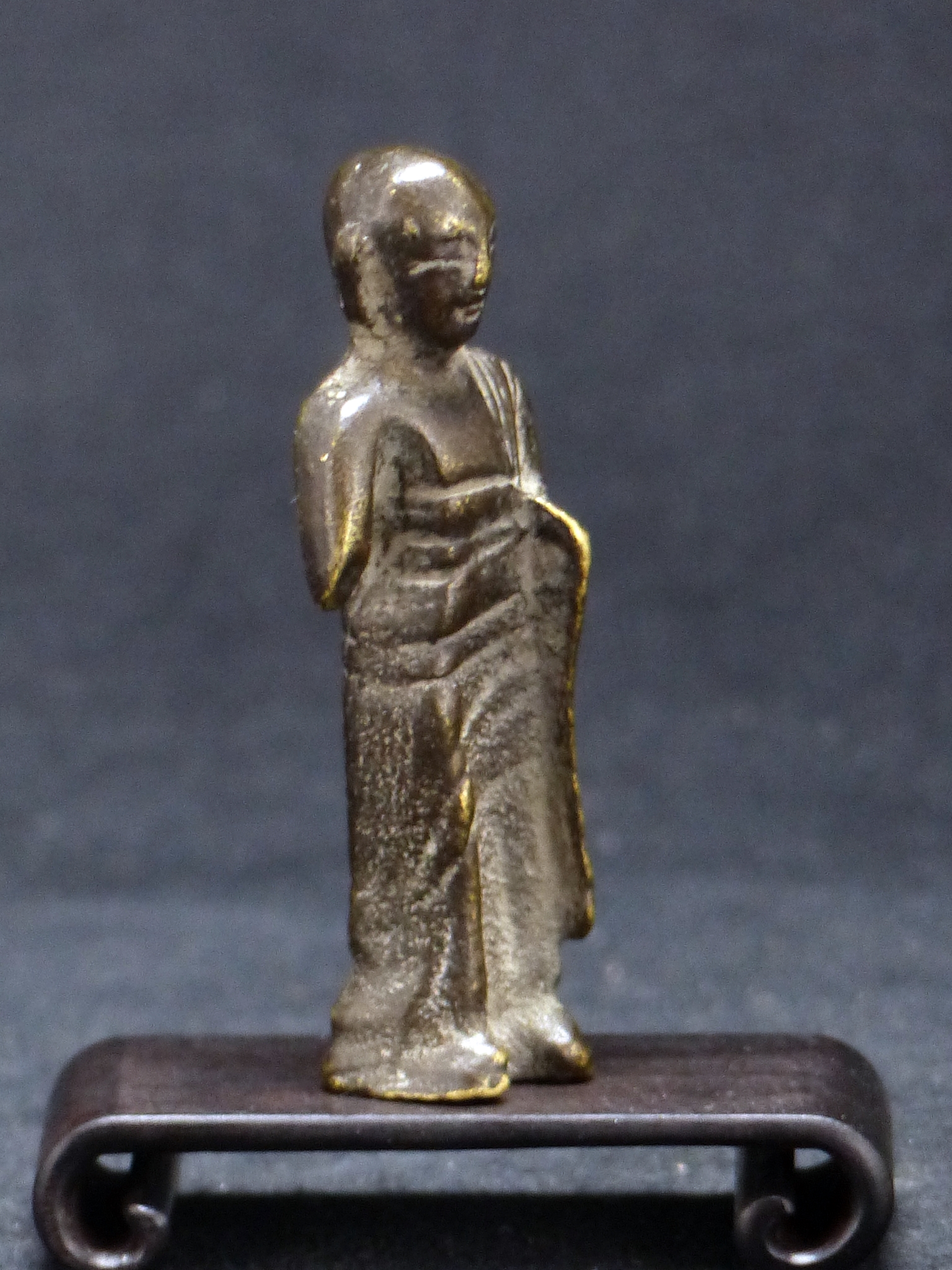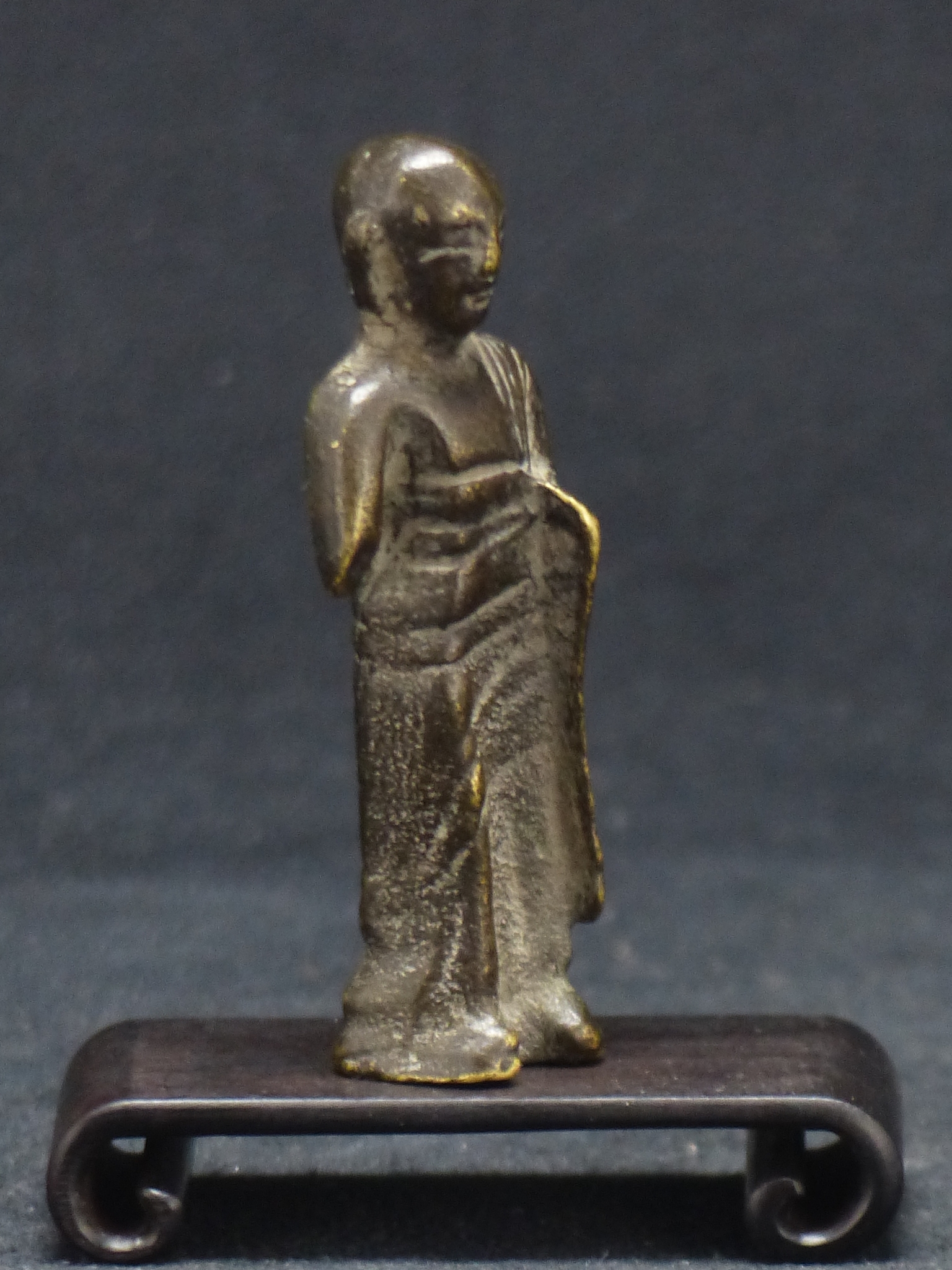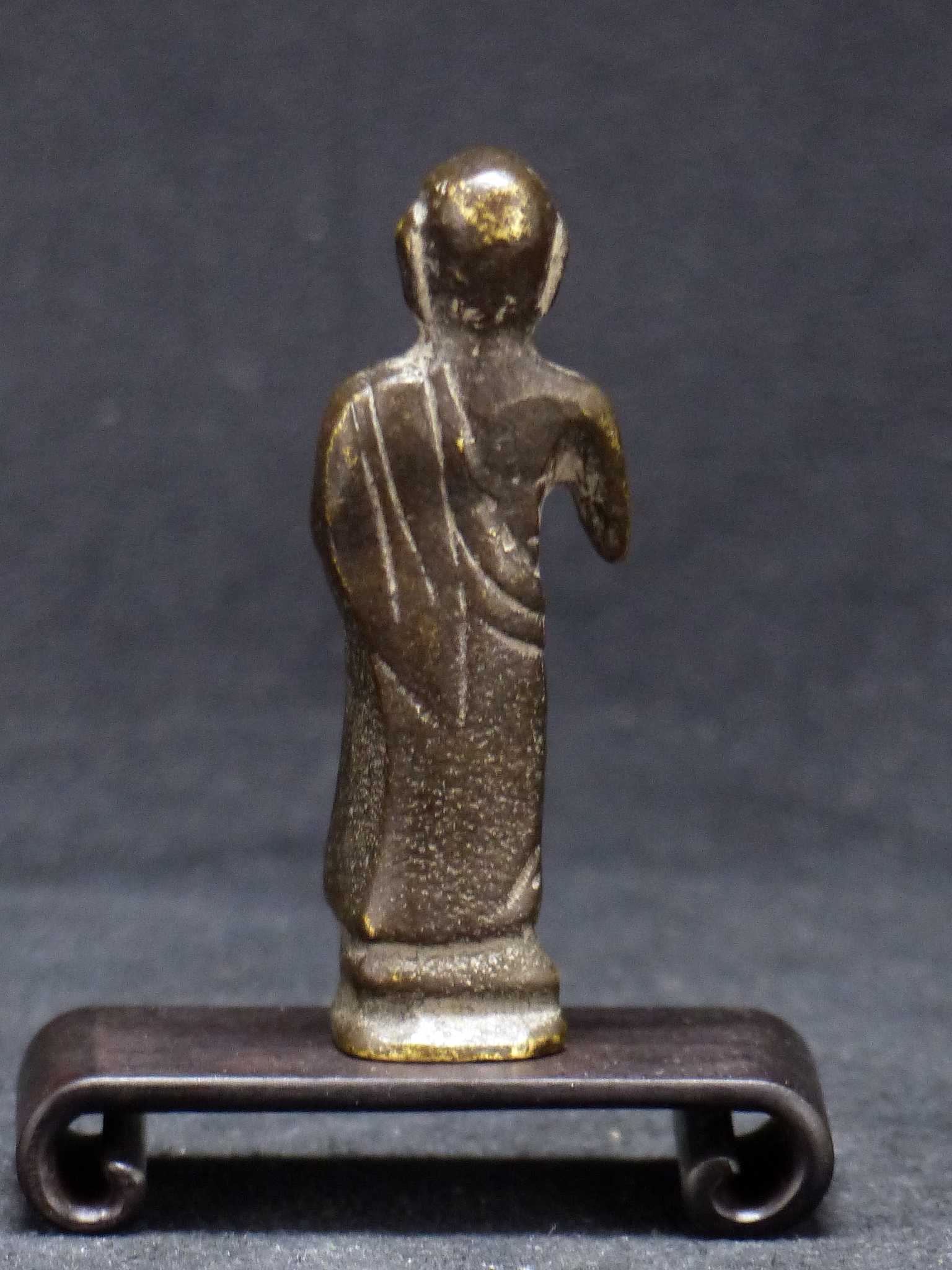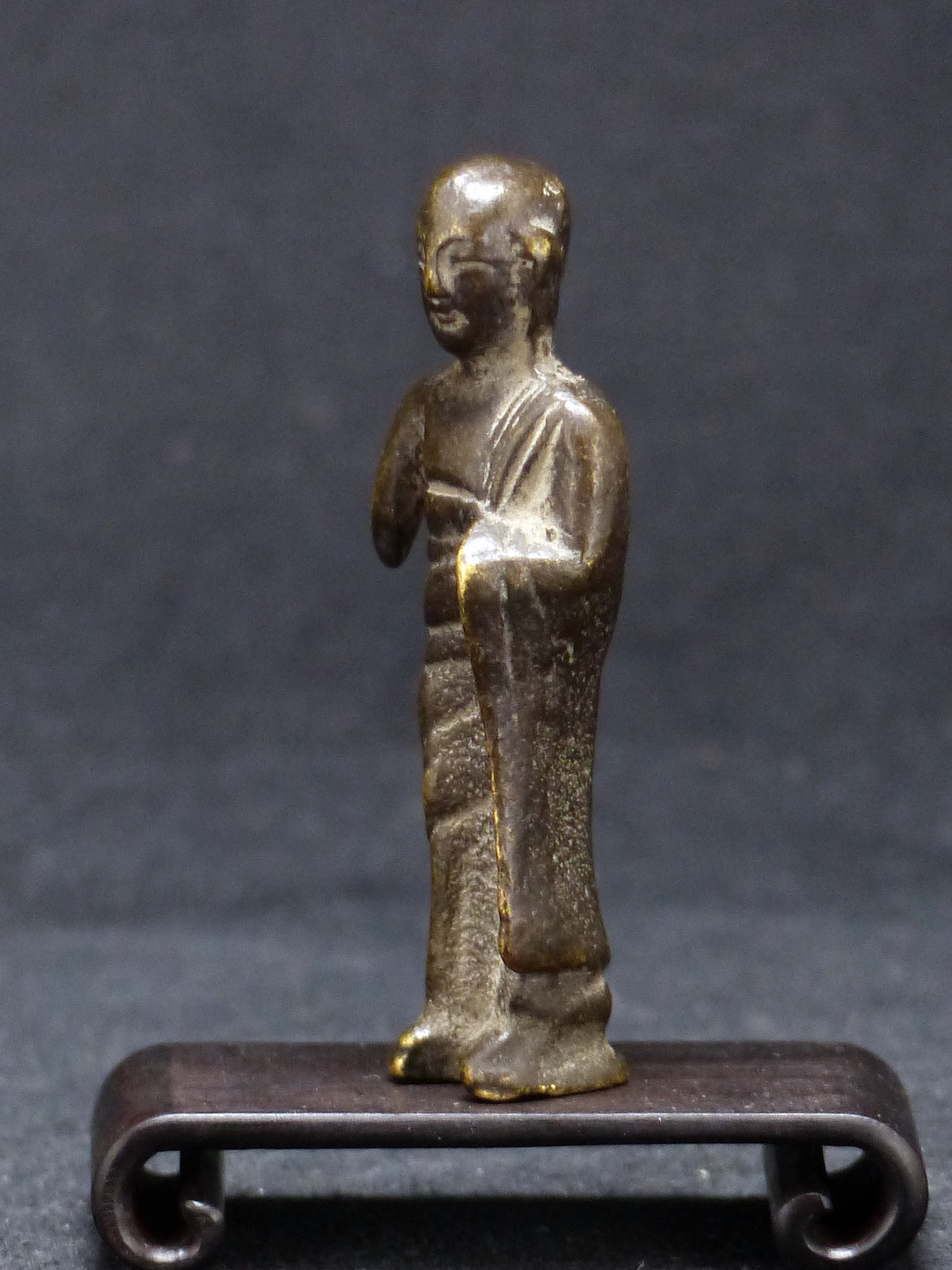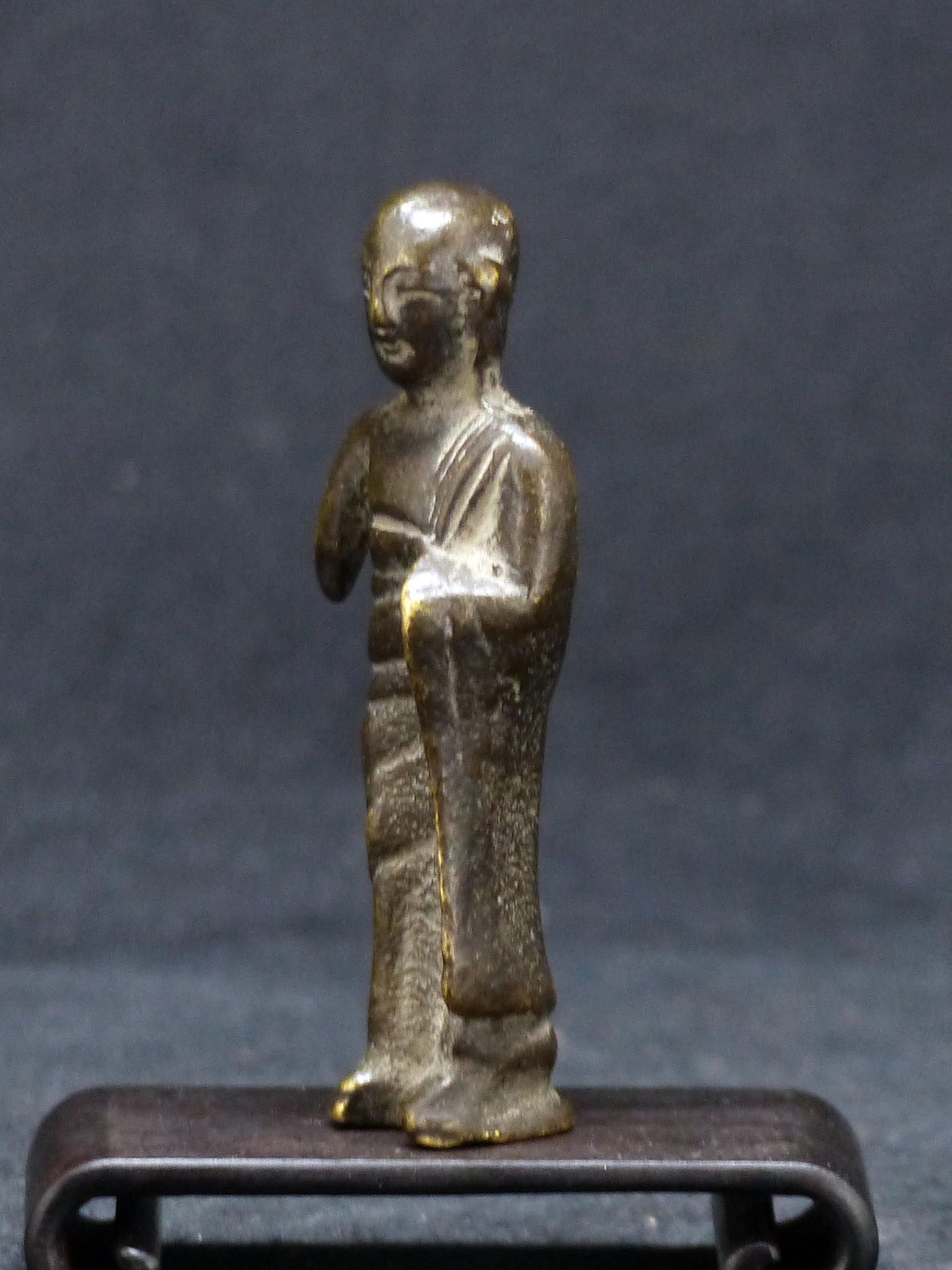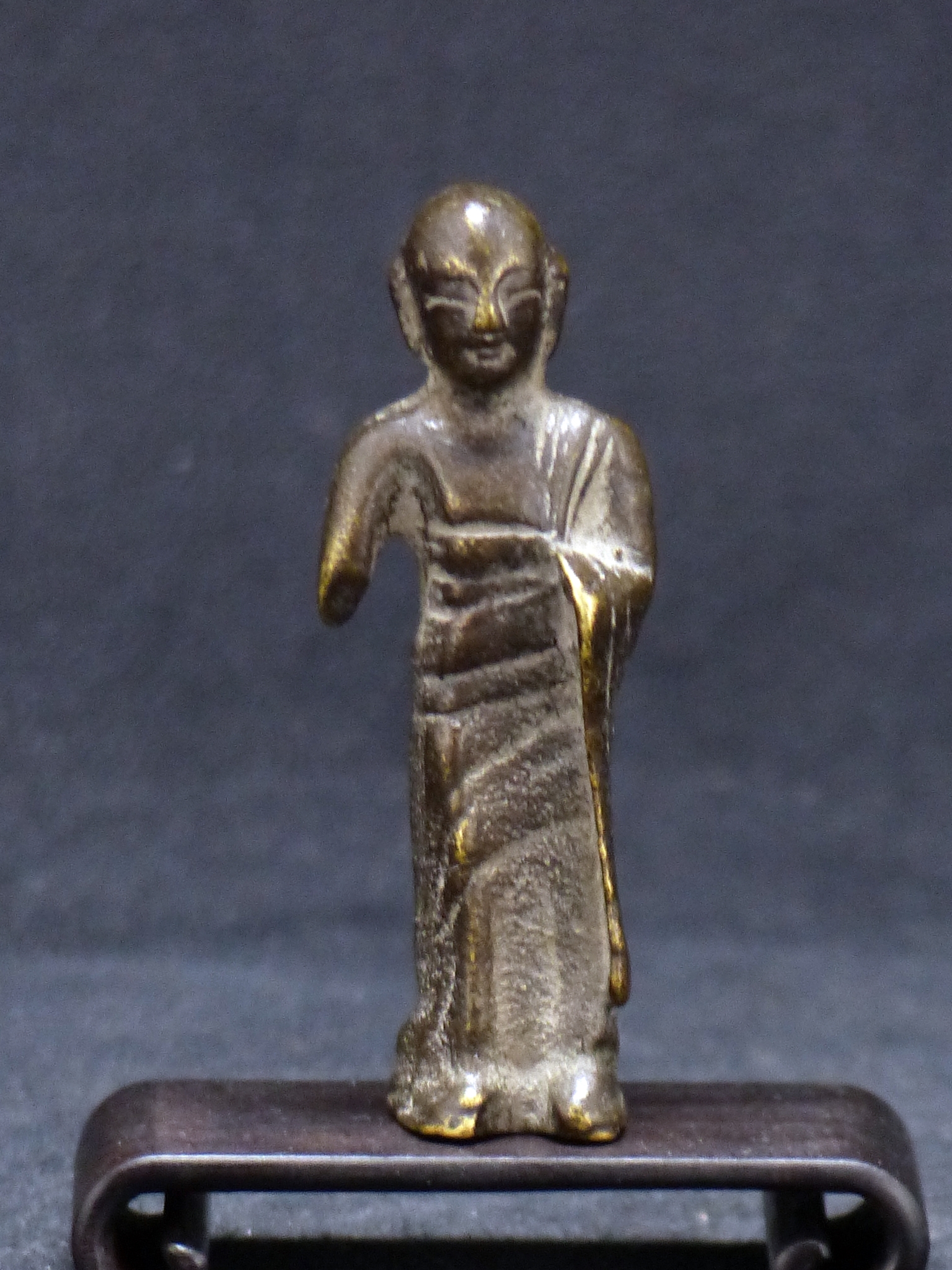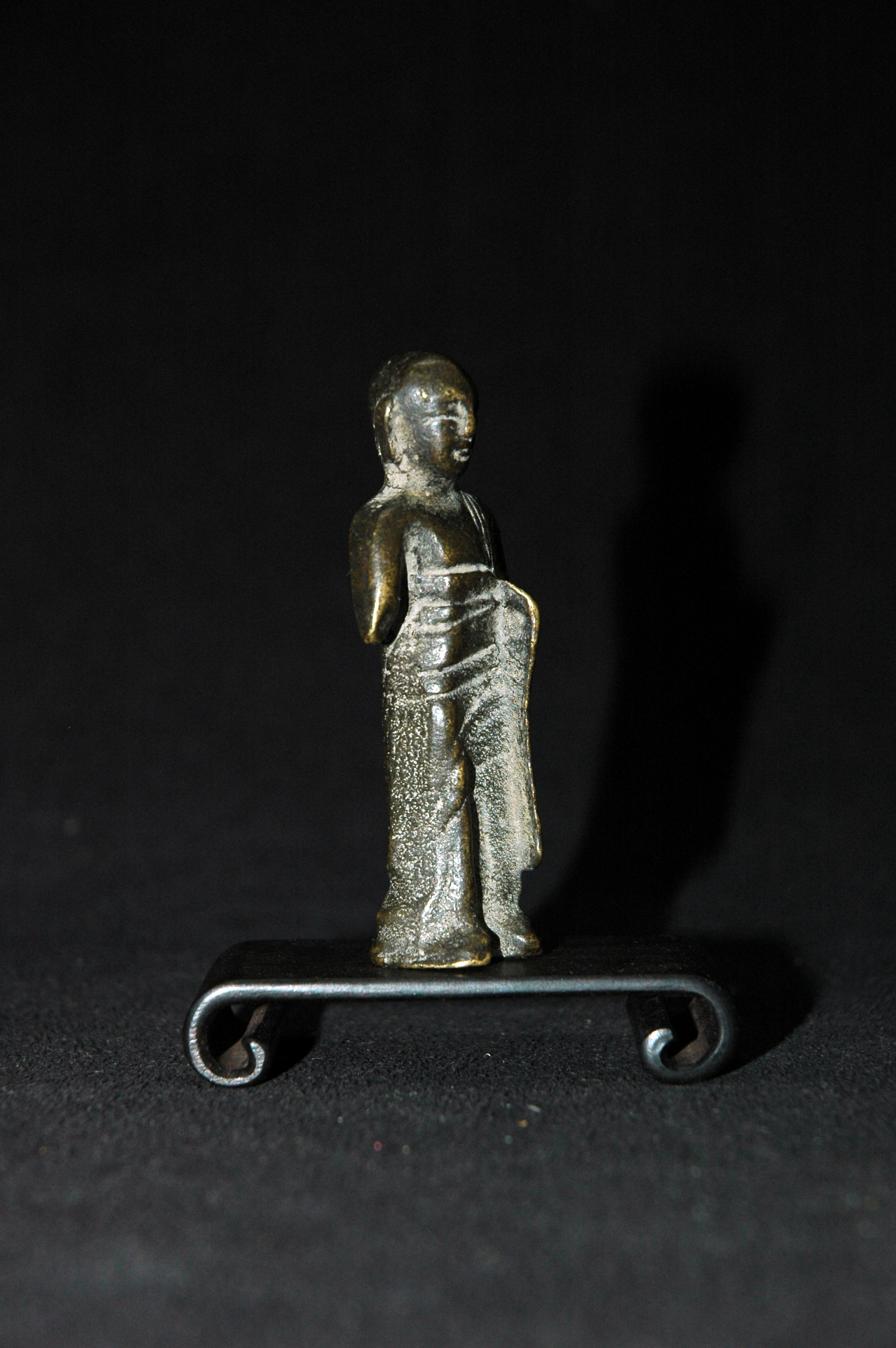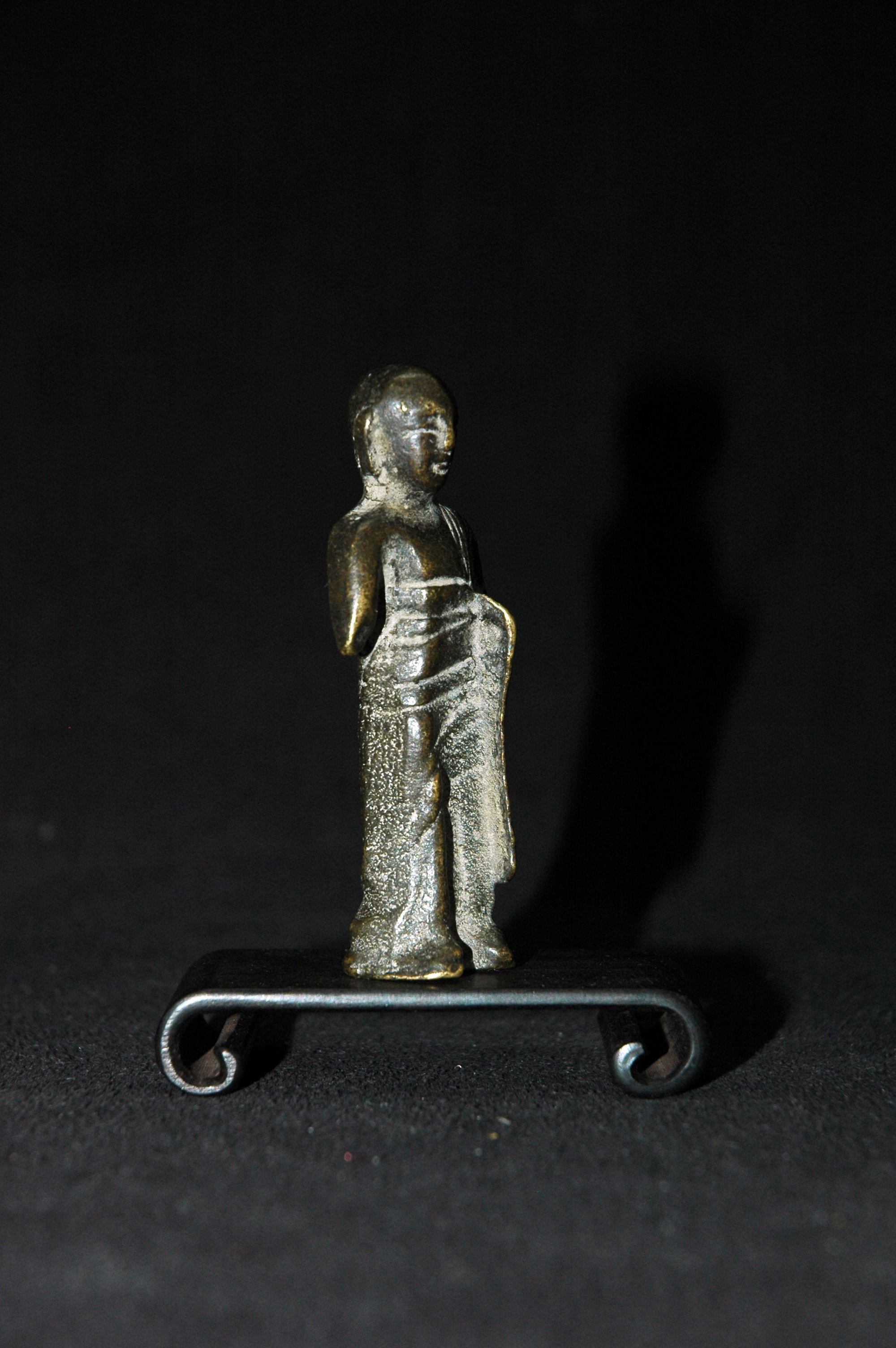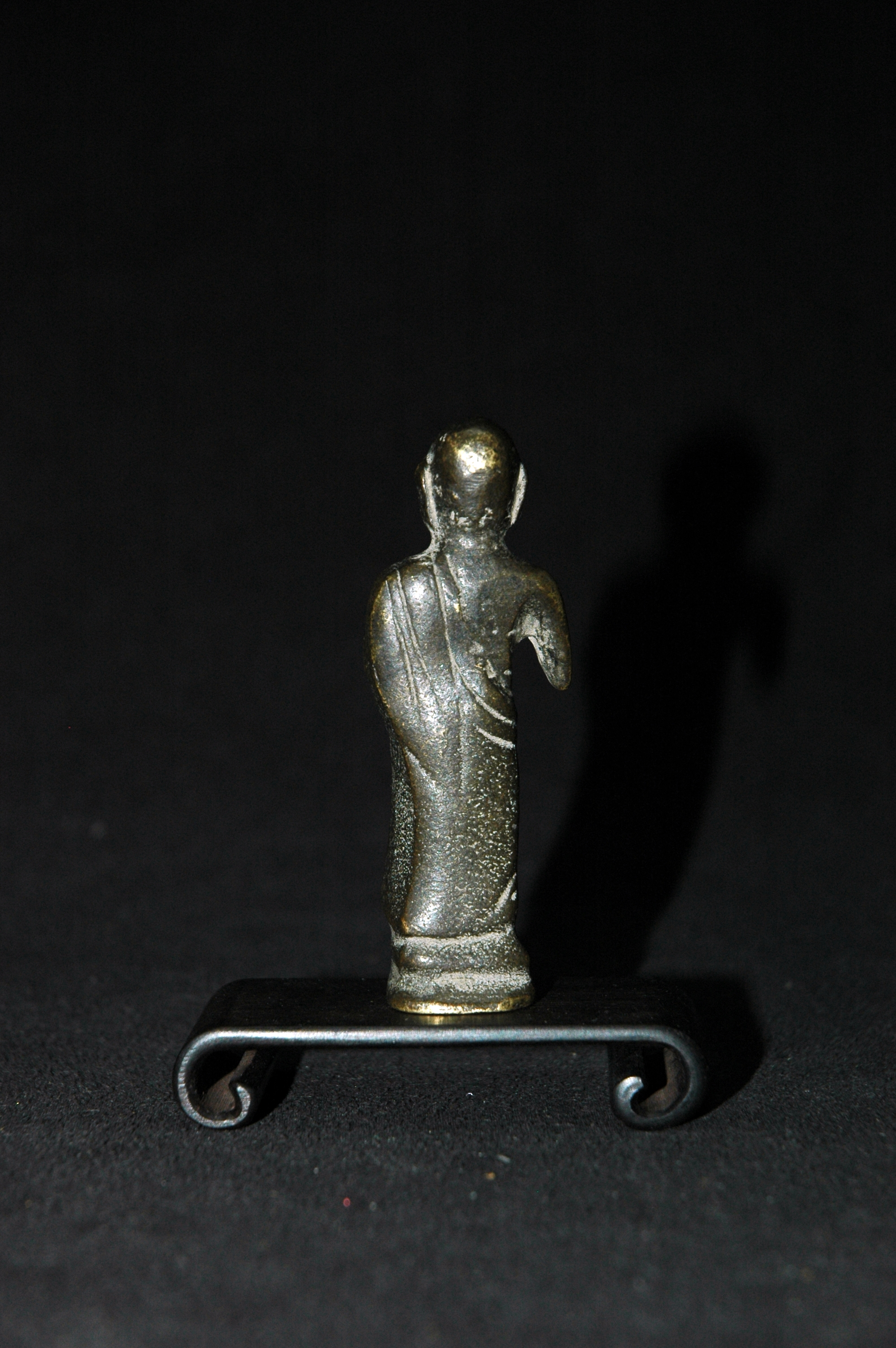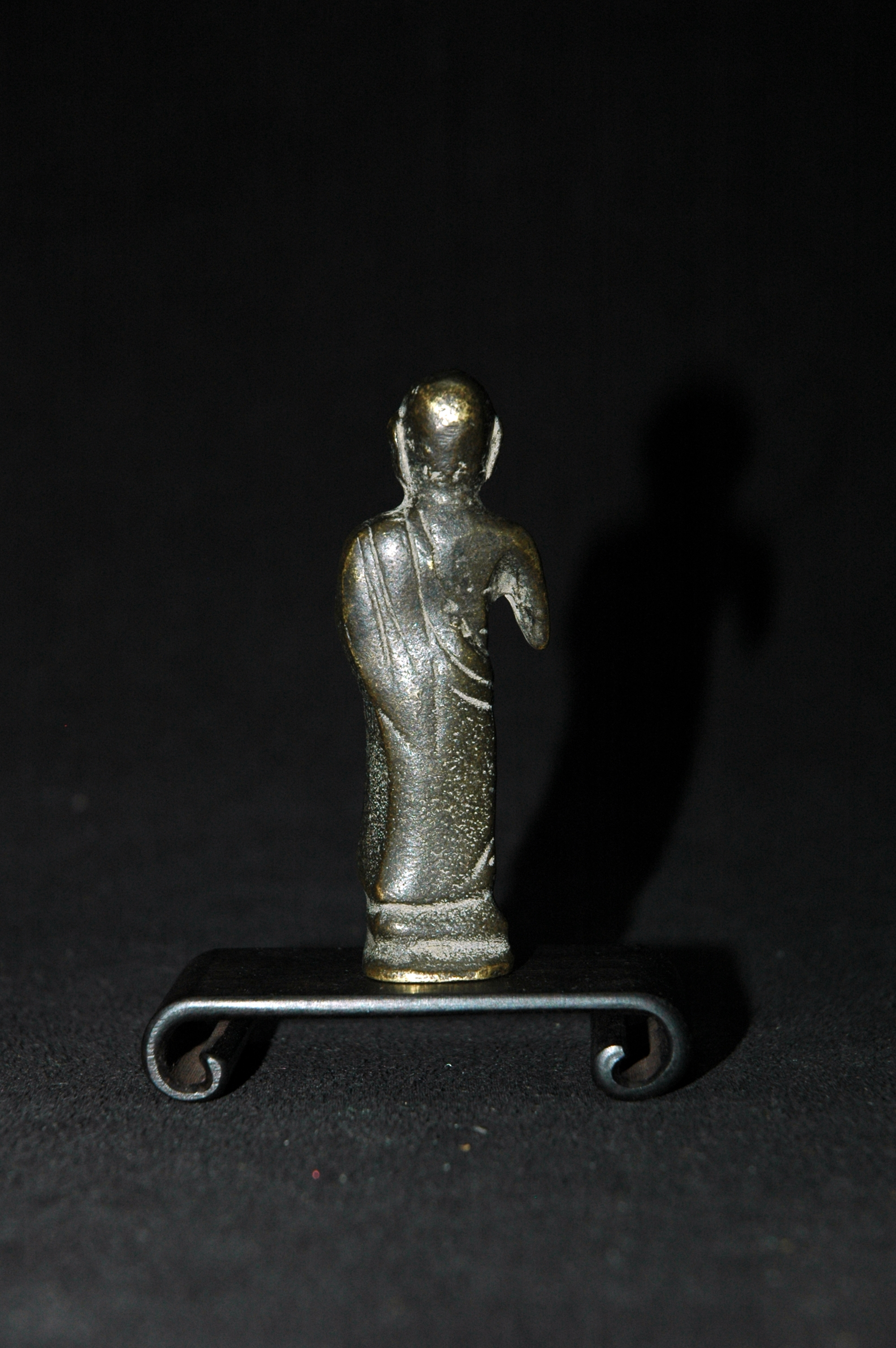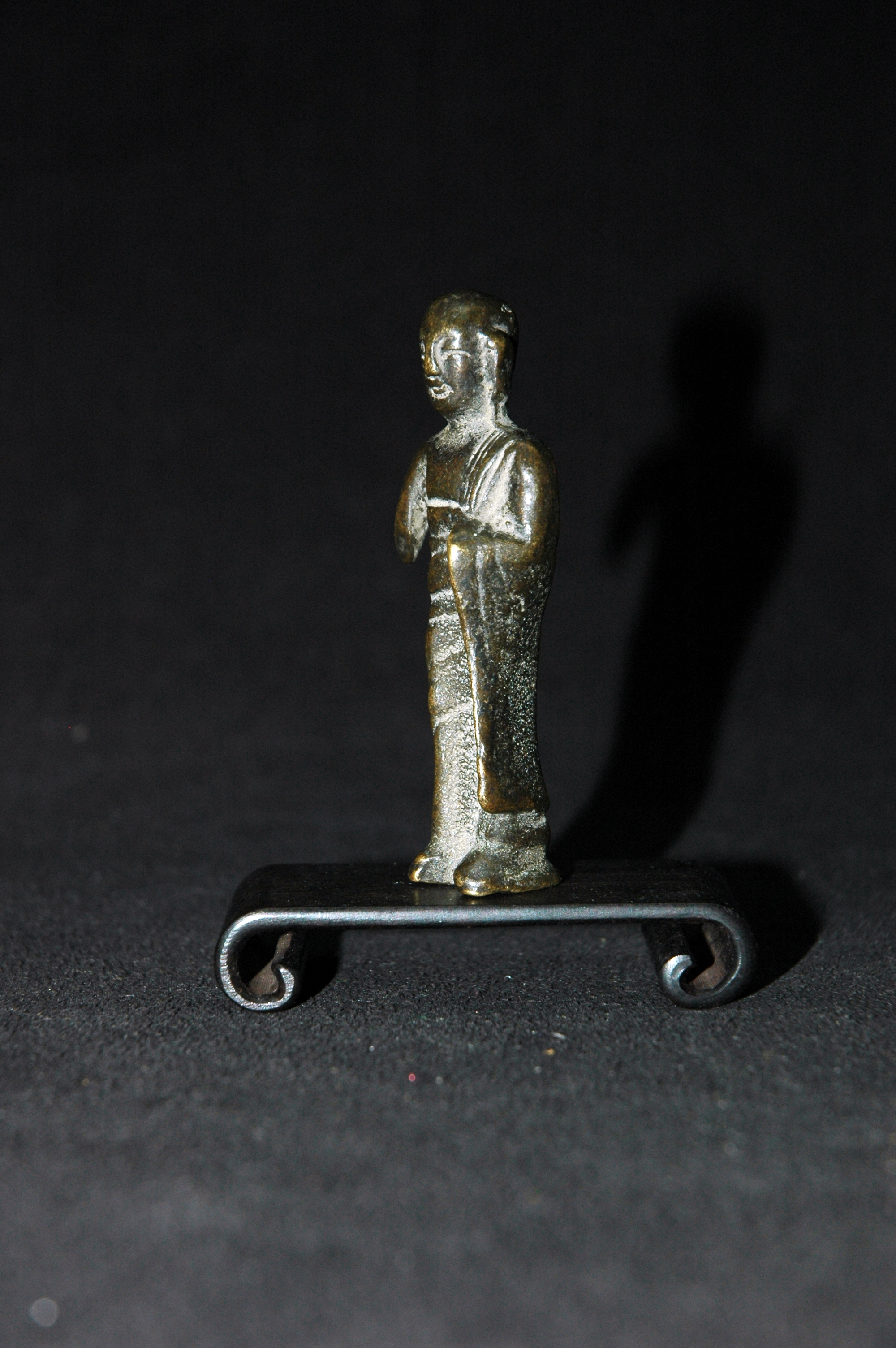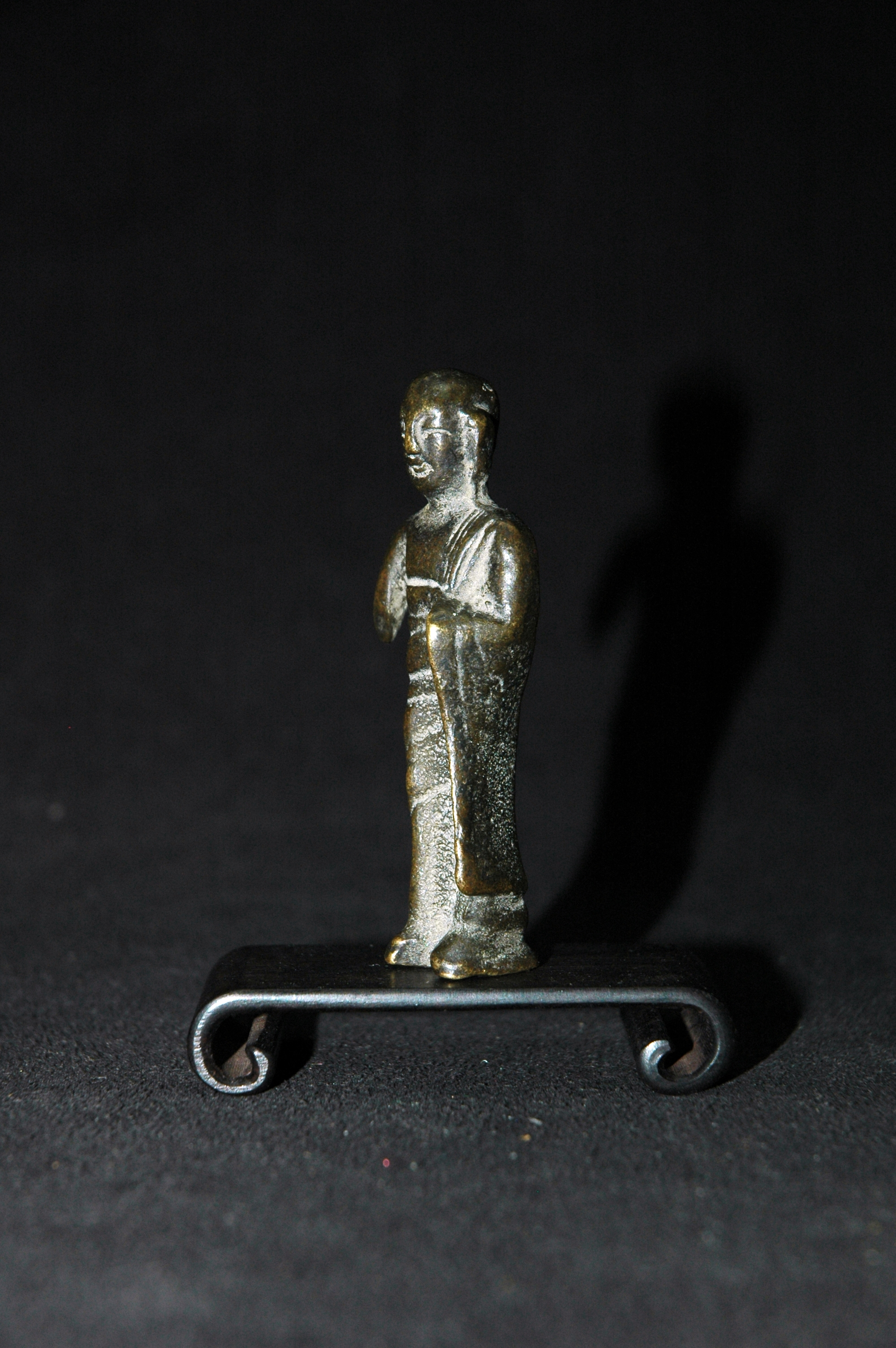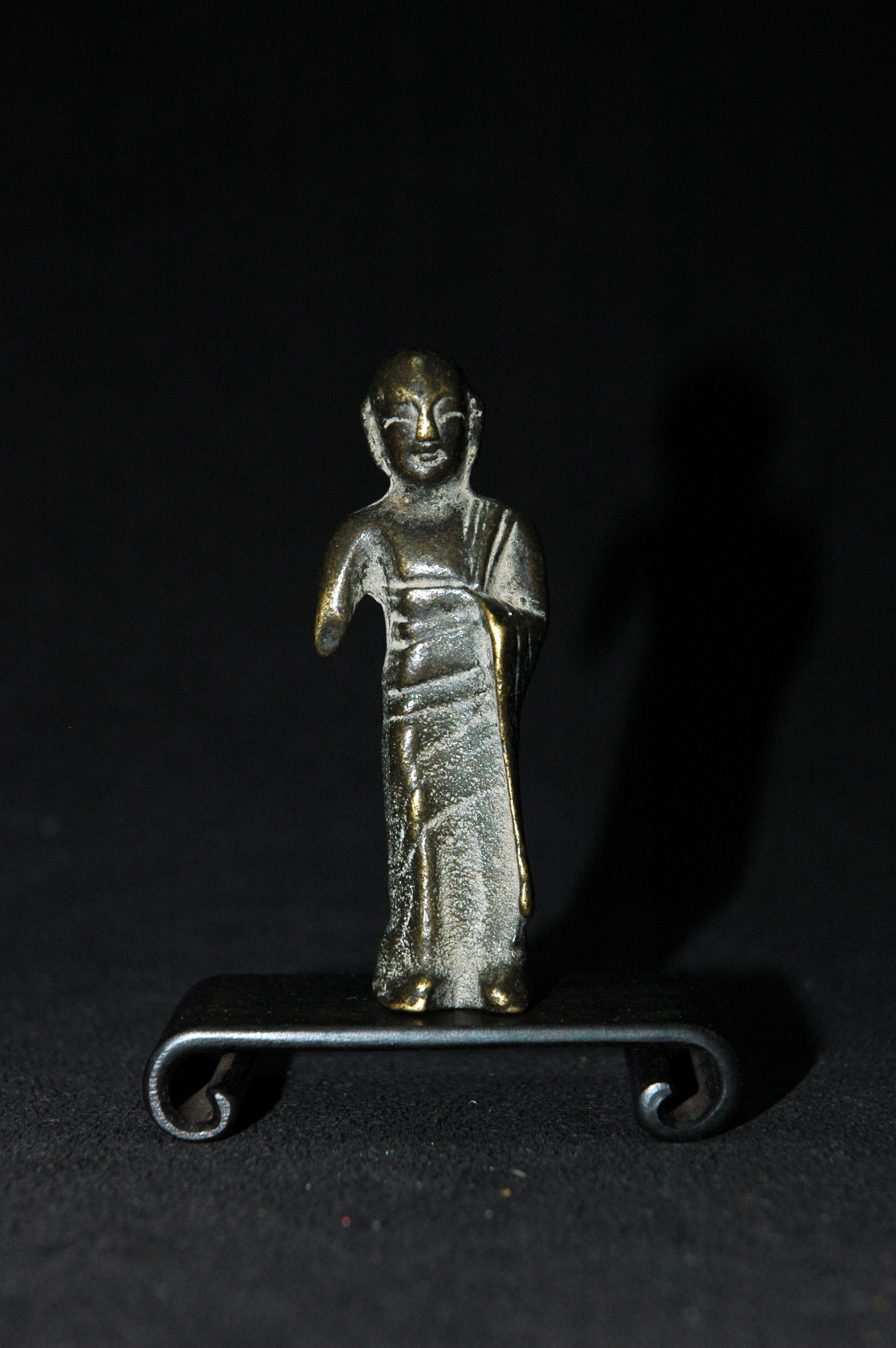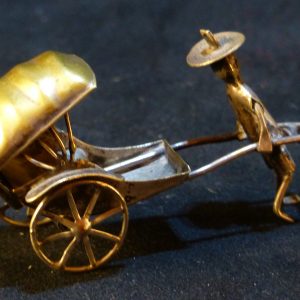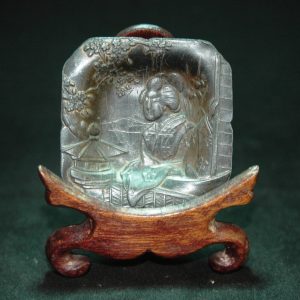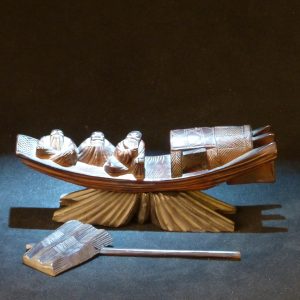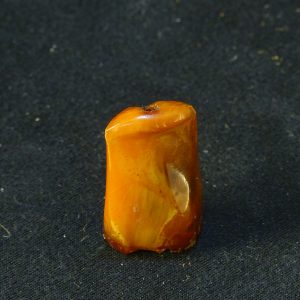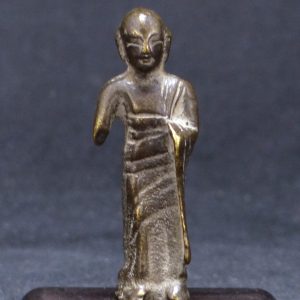Description
大明 錾铜沙弥摆件
参考:北京君一明十国际拍卖有限公司
君一明十·鸿宝源·藏佛观云专场
Lot.15 清代 阿难尊者
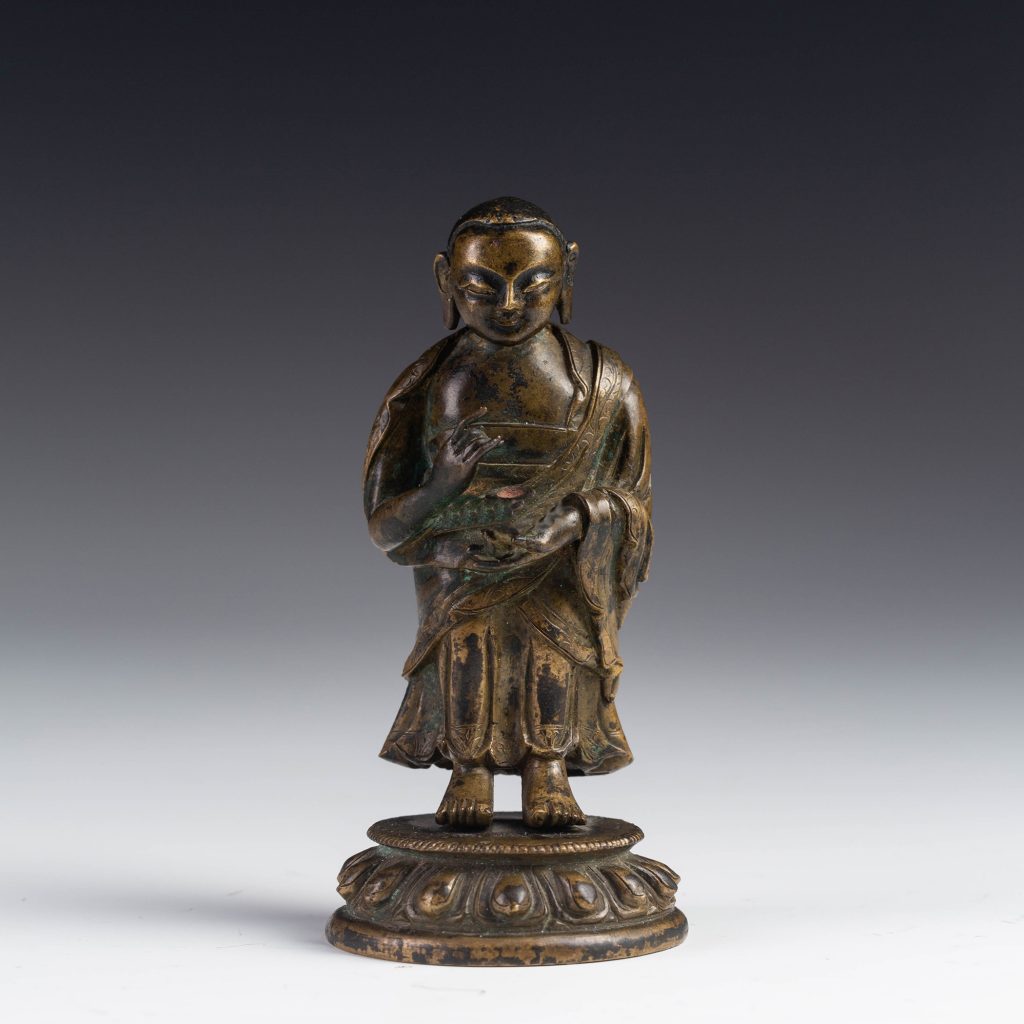
Size 高:9cm
Description
鉴赏:阿难尊者跟随佛陀出家,佛陀五十五岁时,选阿难为常随侍者,当侍者达二十五年。因为他专注地服侍佛陀,谨记无误佛的一言一语,因此被称为「多闻第一」。 汉释迦牟尼的两个弟子迦叶和阿难,此为年青的阿难。髡头,眉清目秀,身着袒右肩大衣,,左手托佛钵,站立于覆莲座上。表情虔诚内省,姿态轻松自如。造型写实,立体感强,衣纹流畅,富有人间情趣。一说或为释迦的弟子「舍利佛」像。【原装封底非常难得】
参考:纽约大都会博物馆 埃及
Standing man holding statuette of Nebethetepet or Nehemetaui
600–200 B.C.
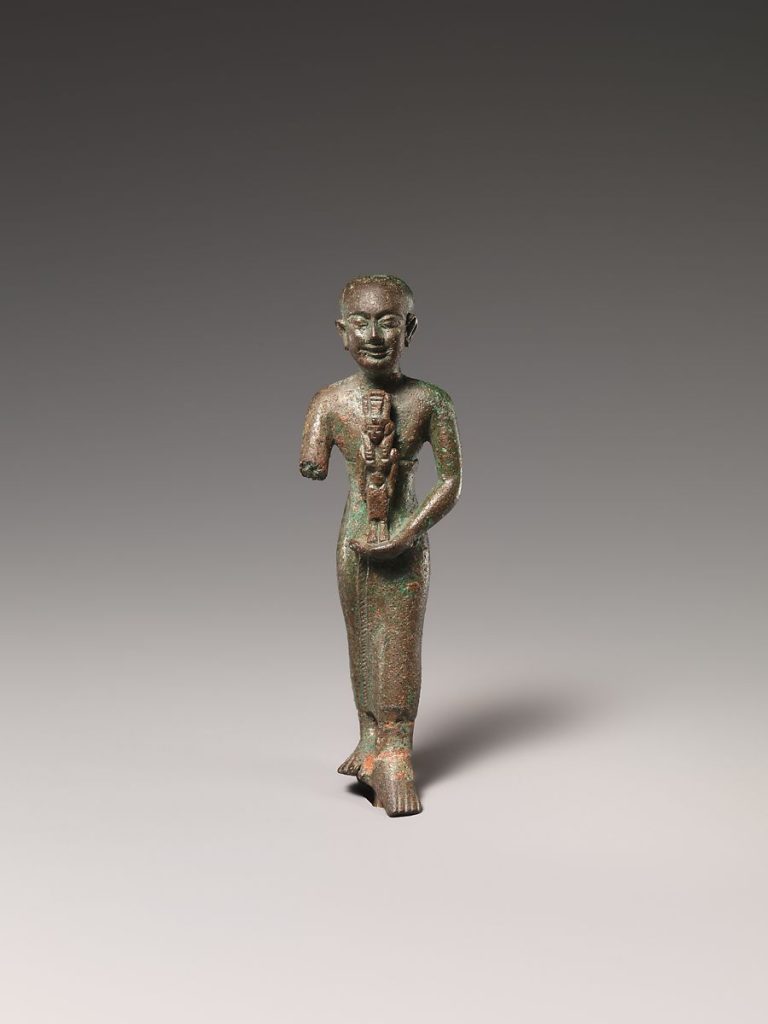
This small figure depicts a man in a wrapped fringed garment, and whose shaven skull could indicate he is a priest. He carries a figure of a goddess. The goddess’s headdress is the sound box of a sistrum indicating she is either Nebethetepet – an aspect of Hathor – or the goddess Nehemetaui, the spouse of Thoth.
On view at The Met Fifth Avenue in Gallery 134
Object Details
Period:Late Period–Ptolemaic Period
Dynasty:Dynasty 26
Date:600–200 B.C.
Geography:From Egypt
Medium:cupreous metal
Dimensions:H. 7.7 × W. 2.3 × D. 2.2 cm (3 1/16 × 7/8 × 7/8 in.)
H. (with tang): 8.7 cm (3 7/16 in.)
Credit Line:Theodore M. Davis Collection, Bequest of Theodore M. Davis, 1915
Accession Number:30.8.98
Provenance
Formerly Theodore M. Davis Collection. Bequeathed to the Museum by Davis, 1915; accessioned, 1930.
Timeline of Art History
Timelines
Egypt, 1000 B.C.-1 A.D.
参考:纽约大都会博物馆 缅甸 断臂坐佛 Seated Buddha, Bronze, Burma
8th–early 9th century
Burma
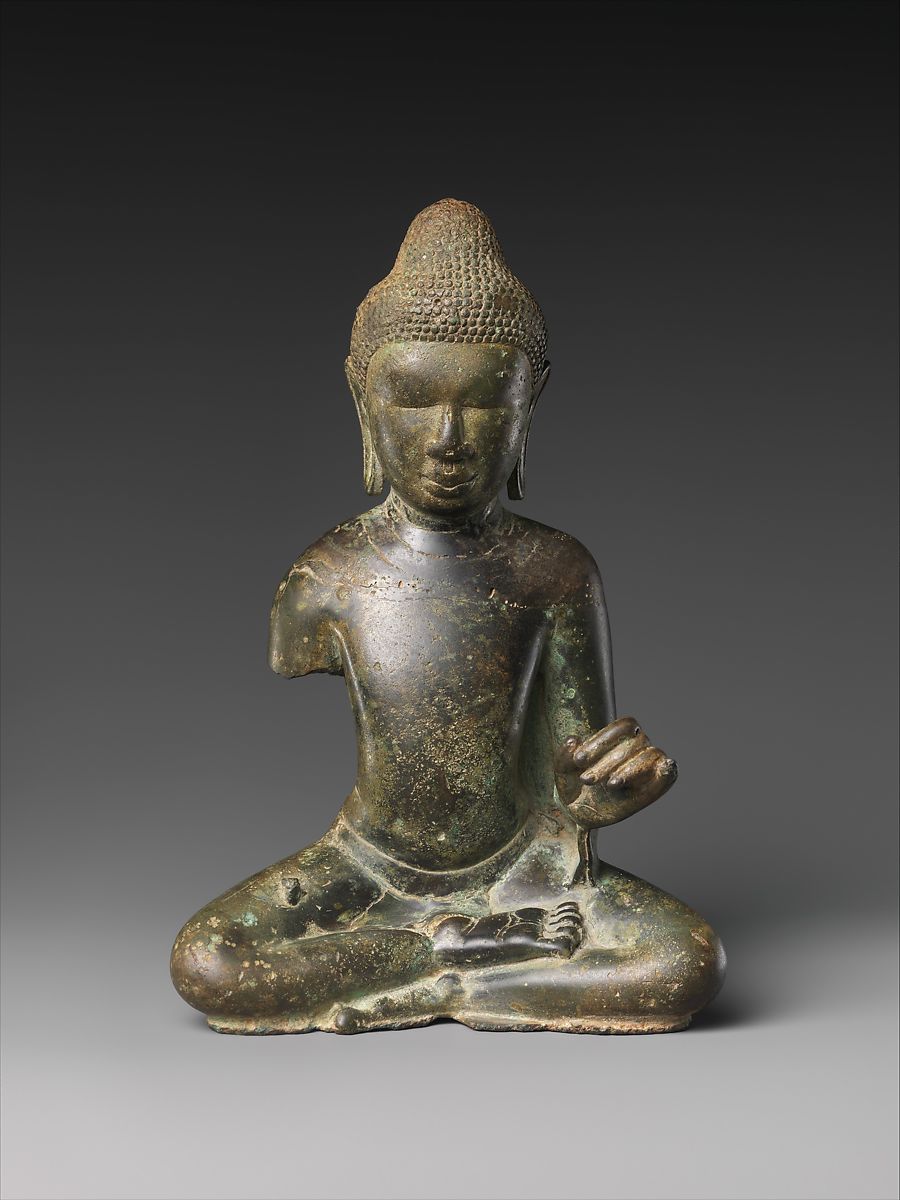
8th–early 9th century
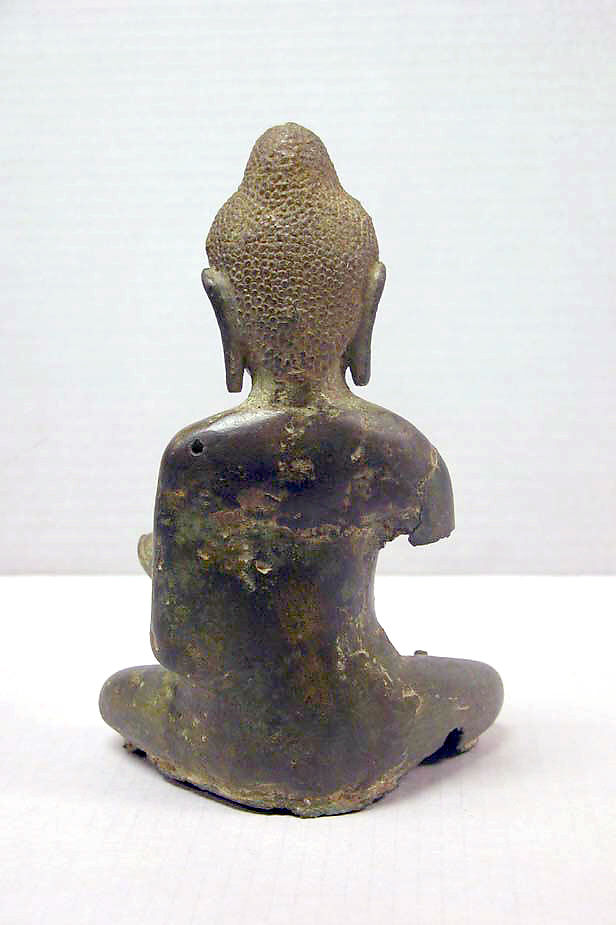
8th–early 9th century
The Pyu kingdom flourished in central and northern Burma from the early years B.C. to about 832, when Halin, the capital, was sacked by forces of the southern Chinese Nanchao kingdom. The sculpture displays a fluidity of modeling, with an emphasis on soft, flowing volumes rather than a linear development of form, that is seen in early Southeast Asian sculpture. This seated Buddha originally held both of his hands in the teaching gesture (vitarkamudra). The pose is associated with Mon-Dvaravati-period sculpture and is not found in India.
On view at The Met Fifth Avenue in Gallery 246
Seated Buddha, Bronze, Burma
Object Details
Period:Pyu period
Date:8th–early 9th century
Culture:Burma
Medium:Bronze
Dimensions:H. 7 7/8 in. (20 cm); W. 5 1/4 in. (13.3.cm); D. 3 1/4 in. (8.3 cm)
Classification:Sculpture
Credit Line:Lindemann Fund, 2006
Accession Number:2006.53
Provenance
Private collection , Bankok, 1960s–1987; private collection , Japan, 1987–1988; sold to Downey Holdings; [ Downey Holdings Inc. , 1988–2006; sold to MMA]

![[临渊阁]天地一家春](https://www.antiquekeeper.ca/wp-content/uploads/2023/04/BW-Erping-1a-17-6-1.jpg)
